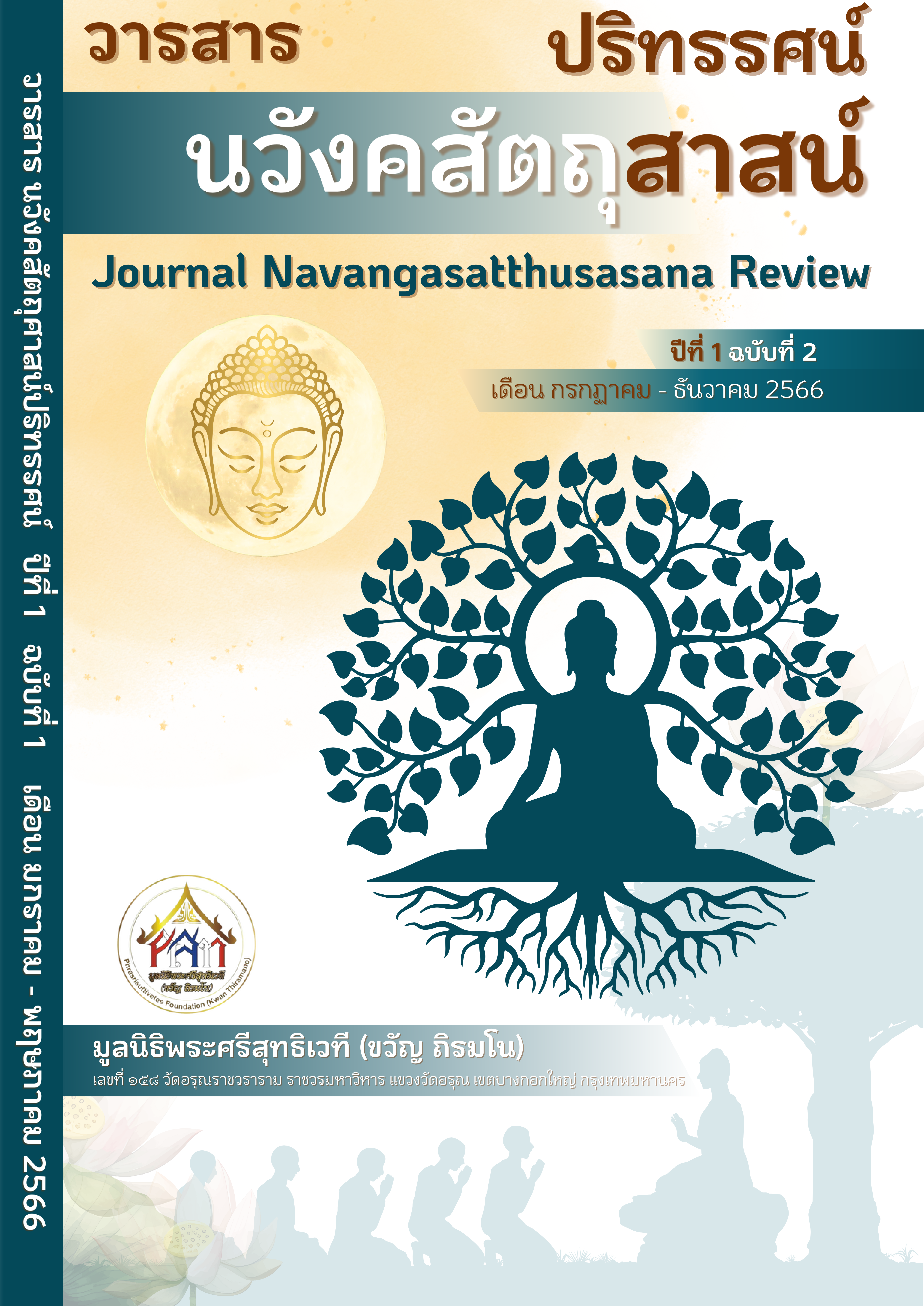Dukkhavedanā (Painful Feeling) in Buddhist Principles
Main Article Content
Abstract
This academic paper investigates to analyze the concept of Dukkhavedanā in Buddhism which truly refers to unbearable state of body. Dukkhavedanā appears in different senses, in generally speaking, it refers to physical pains. This is included in Dukkha or suffering found in Tilakkhaṇa teaching, i.e., Dukkhatā or unbearable state of mind which is narrowest meaning because it happens to all, ordinary and Noble One, while Dukkhavedanā in Paṭiccasamuppāda and Ariyasacca, even though the Buddha himself bears Dukkhavedanā with efforts. Dukkha-ariyasacca is Pariññākicca or knowable work in Noble Truth of both common and Noble One before Arahanta attaining. It is true that Dukkhavedanā found in five aggregate attachment signifies to Dukkha-ariyasacca, so Dukkhavedanā is not Dukkha-ariyasacca since it is an object of insight observing, whereas Dukkhavedanā in Paṭiccasamuppāda is included as feeling, sorrows, lamentation, pains, despairs. Dukkhavedanā appeared in various places, contains diverse senses, but the Buddha had used it as an observed object for realizing Noble Truth leading to abandon from painful feeling through insight meditation based on Mahāsatipaṭṭhāna, that is, observing painful feeling without attachment, which leads to Four Noble Truth realization. By this reason, Dukkha-ariyasacca observing includes Dukkhavedanā observing, it also is the knowable work, the first Ariyasacca. Having observed Dukkhavedanā, the mind will accept Dukkhavedanā as rise and falls, ever-changing according to its conditions or contact as found in Samudayavāra line of Paṭiccasamuppāda, which later leads to Four Noble Truth realization. Having the right view, insight meditator finally abandons ignorance, which is the end of suffering called Nibbana.
Article Details

This work is licensed under a Creative Commons Attribution-NonCommercial-NoDerivatives 4.0 International License.
เนื้อหาและข้อมูลในบทความที่ลงตีพิมพ์ในวารสาร นวังคสัตถุสาสน์ปริทรรศน์ถือเป็นข้อคิดเห็นและความรับผิดชอบของผู้เขียนบทความโดยตรงซึ่งกองบรรณาธิการวารสาร ไม่จำเป็นต้องเห็นด้วย หรือร่วมรับผิดชอบใด ๆ บทความ ข้อมูล เนื้อหา รูปภาพ ฯลฯ ที่ได้รับการตีพิมพ์ในวารสาร นวังคสัตถุสาสน์ปริทรรศน์ถือเป็นลิขสิทธิ์ของวารสาร นวังคสัตถุสาสน์ปริทรรศน์หากบุคคลหรือหน่วยงานใดต้องการนำทั้งหมดหรือส่วนหนึ่งส่วนใดไปเผยแพร่ต่อหรือเพื่อกระทำการใด ๆ จะต้องได้รับอนุญาตเป็นลายลักอักษรจากวารสาร นวังคสัตถุสาสน์ปริทรรศน์ก่อนเท่านั้น
References
จำนงค์ ทองประเสริฐ, ศาสตราจารย์ (พิเศษ). ภาษไทยไขขาน. กรุงเทพมหานคร: สำนักพิมพ์แพร่พิทยา, 2528.
พระกัมมัฏฐานนาจริยะ พระปัณฑิตาภิวงศ์. รู้แจ้งในชาตินี้. แปลโดย พระครูปลัดประจาก สิริวณฺโณ และคณะ. พิมพ์ครั้งที่ 10. กรุงเทพมหานคร: บริษัท สหธรรมิก จำกัด, 2552.
พระพรหมคุณาภรณ์ (ป.อ. ปยุตฺโต). พจนานุกรมพุทธศาสตร์ ฉบับประมวลธรรม. พิมพ์ครั้งที่ 34. กรุงเทพมหานคร: สำนักพิมพ์ผลิธัมม์, 2559.
_________. พุทธธรรม ฉบับปรับขยาย. พิมพ์ครั้งที่ 41. กรุงเทพมหานคร: สำนักพิมพ์ผลิธัมม์, 2558.
พระพุทธโฆสเถระ. คัมภีร์วิสุทธิมรรค. แปลโดย สมเด็จพระพุฒาจารย์ (อาจ อาสภมหาเถร). พิมพ์ครั้งที่ 10. กรุงเทพมหานคร: บริษัท ธนาเพรส จำกัด, 2554.
พระภัททันตะอาสภะมหาเถระ อัคคมหากัมมัฏฐานจริยะ. 100 ปี อัคคมหากัมมัฏฐานาจริยะ. กรุงเทพมหานคร: บริษัท อมรินทร์พริ้นติ้ง แอนด์ พับลิชชิ่ง จำกัด (มหาชน), 2554.
พระโสภณมหาเถระ (มหาสีสยาดอ). ธัมมจักกัปปวัตนสูตร. แปลโดย พระคันธสาราภิวงศ์. กรุงเทพมหานคร: ห้างหุ้นส่วนจำกัดประยูรสาส์นไทย การพิมพ์, 2555.
มหาจุฬาลงกรณราชวิทยาลัย. คัมภีร์วิสุทธิมรรค ฉบับมหาจุฬาลงกรณราชวิทยาลัย. กรุงเทพมหานคร: โรงพิมพ์มหาจุฬาลงกรณราชวิทยาลัย, 2555.
_________. พระไตรปิฎกภาษาไทย ฉบับมหาจุฬาลงกรณราชวิทยาลัย. กรุงเทพมหานคร: มหาวิทยาลัยมหาจุฬาลงกรณราชวิทยาลัย, 2539.
มูลนิธิมหามกุฏราชวิทยาลัย. วารสารธรรมจักษุ. ปีที่ 99 ฉบับที่ 10. (กรกฎาคม 2558).

